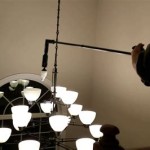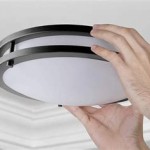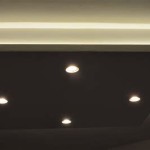Recessed Lighting for Vaulted Ceilings: An Essential Guide
Vaulted ceilings add an air of grandeur and spaciousness to any room. However, when it comes to lighting, they can pose unique challenges. Recessed lighting is a popular choice for vaulted ceilings, as it provides ample illumination without taking up too much space. Here are some essential aspects to consider when using recessed lighting in vaulted ceilings:
1. Placement and Spacing
The placement and spacing of recessed lights are crucial for achieving optimal illumination. For vaulted ceilings, lights should be placed along the ridge lines and the slopes of the ceiling. The distance between lights will depend on the height and width of the ceiling, as well as the desired light intensity. As a general rule of thumb, lights should be spaced 3-4 feet apart for even illumination.
2. Beam Angle and Wattage
The beam angle of recessed lights determines the spread of light. Narrow beam lights provide a more focused beam, while wide beam lights create a wider spread of light. For vaulted ceilings, wide beam lights are typically recommended to ensure even coverage. The wattage of the bulbs will also impact the brightness of the light. Higher wattage bulbs will produce brighter light, but they may also generate more heat.
3. Fixture Type and Trim
Recessed light fixtures come in a variety of types, including traditional cans, gimbal trims, and baffle trims. Gimbal trims allow the lights to be adjusted and tilted, which can be useful for highlighting specific areas of the ceiling or walls. Baffle trims help to reduce glare, which is important for vaulted ceilings to prevent light from bouncing directly into the eyes.
4. Dimming Capabilities
Dimming capabilities allow you to control the brightness of the lights to create different moods and ambiances. Dimmable recessed lights are recommended for vaulted ceilings, as they provide flexibility and allow you to adjust the light levels to suit different activities or times of day.
5. Energy Efficiency
When choosing recessed lights for vaulted ceilings, energy efficiency should be a top priority. LED recessed lights are highly efficient and consume significantly less energy compared to traditional incandescent or fluorescent lights. LED lights also have a longer lifespan, reducing maintenance and replacement costs.
6. Installation
Installing recessed lighting in vaulted ceilings requires specialized knowledge and skills. It is recommended to hire a qualified electrician to ensure proper installation and safety. The electrician will need to determine the best locations for the lights, cut holes in the drywall, and wire the lights.
Recessed lighting can be a stylish and effective way to illuminate vaulted ceilings. By considering the placement, beam angle, wattage, fixture type, dimming capabilities, energy efficiency, and installation, you can create a lighting plan that meets your specific needs and enhances the beauty of your vaulted ceiling.

Can You Put Recessed Lights Into A Vaulted Ceiling Alternatives

Halo 6 In White Recessed Lighting With Sloped Ceiling Trim Baffle 456w The Home Depot

A Guide Of Vaulted Ceiling Recessed Lighting Placement Recessedlightspro

Can You Put Recessed Lights Into A Vaulted Ceiling Alternatives

Sloped Ceiling Recessed Lighting Jdm Electrical Contractors

Vaulted Ceiling Lighting Ideas Creative Solutions

A Guide Of Vaulted Ceiling Recessed Lighting Placement Recessedlightspro

Halo H47 6 In Aluminum Recessed Lighting Housing For New Construction Sloped Ceiling Insulation Contact Air Tite H47icat The Home Depot

A Guide Of Vaulted Ceiling Recessed Lighting Placement Recessedlightspro

Led Recessed Lighting For Sloped Ceilings 3 4 Aperture Options
Related Posts








